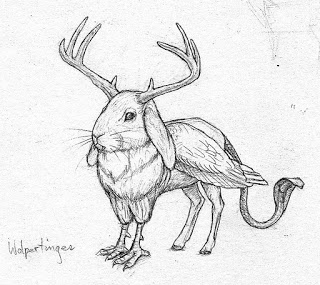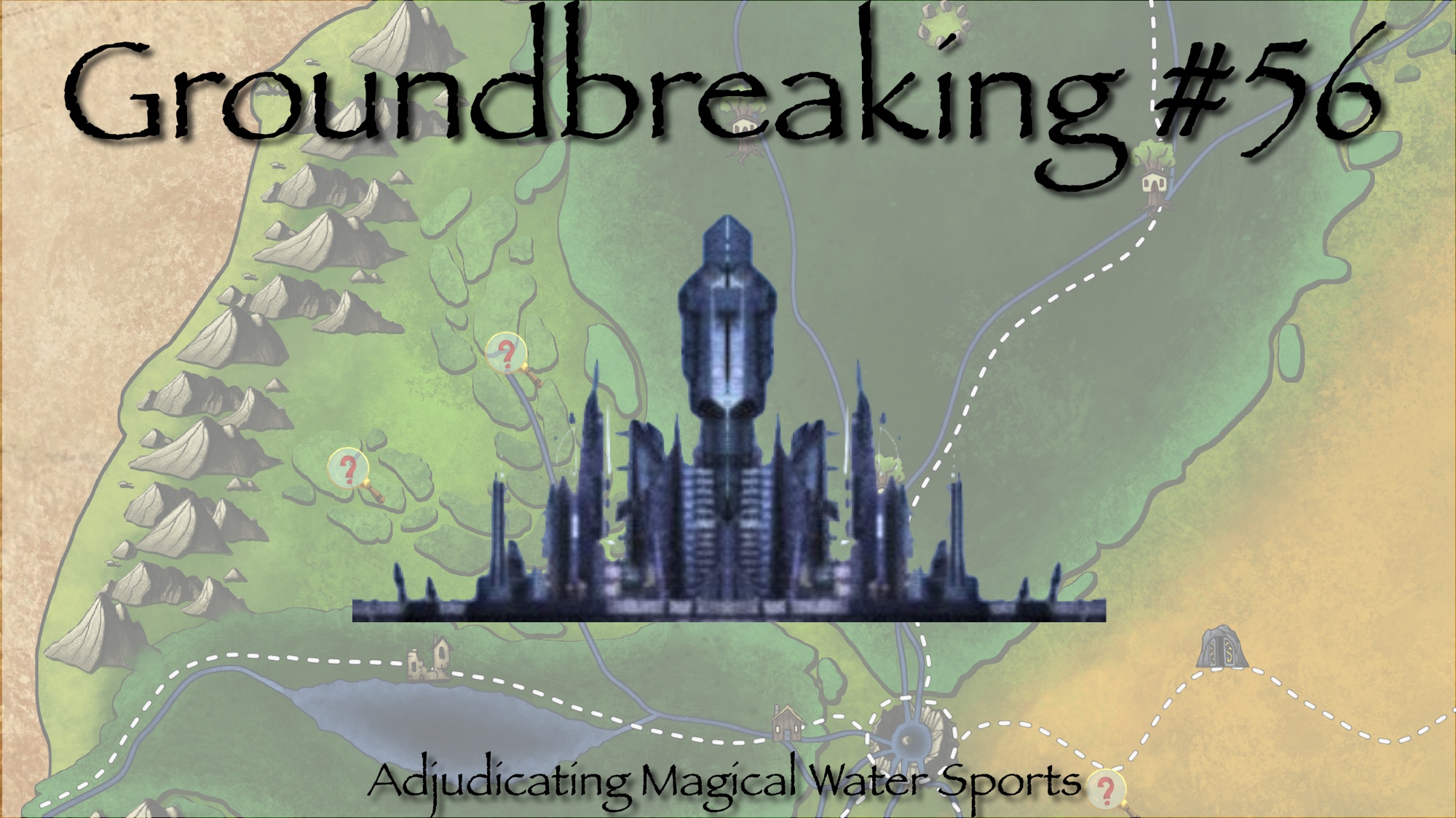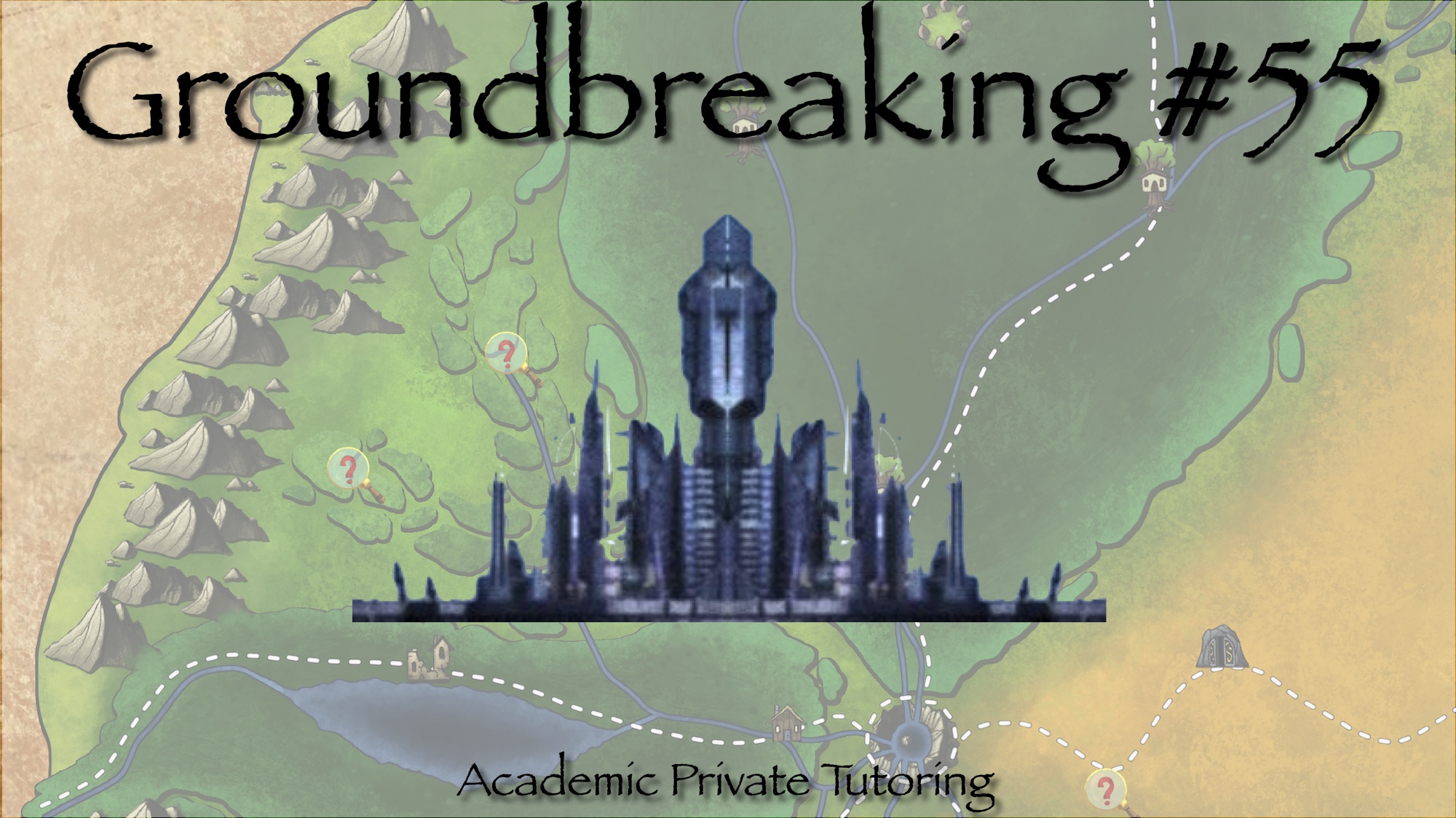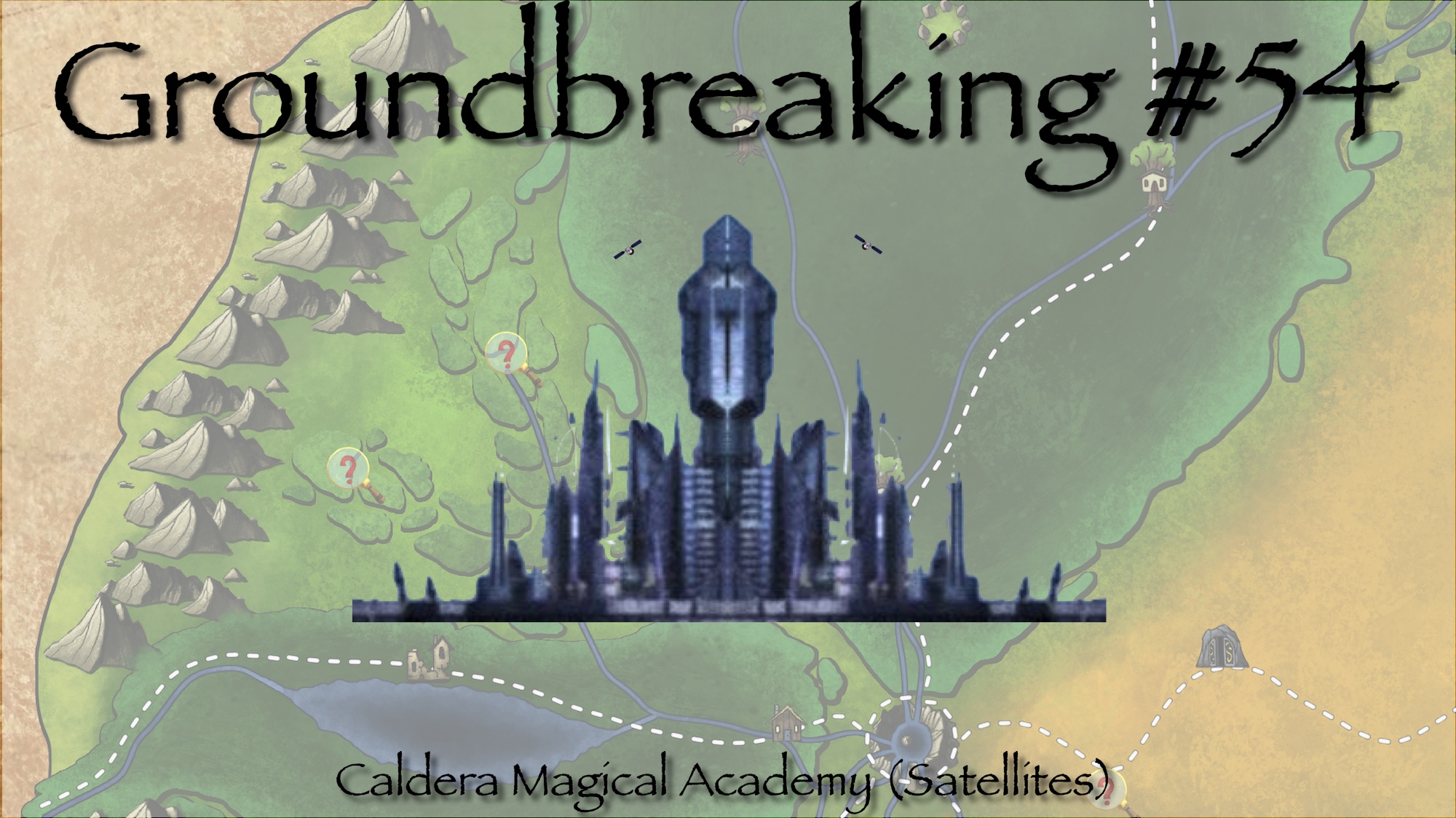Many cultures tend to have holidays that trace back to their earliest days. Often, these traditions have roots based in a local druidic faith or practice. For the people of Marathis’ Cradle, however, the druids still have an active presence and so their Winter Festival has remained nearly unchanged since it was first held.
Hello, and welcome to a Groundbreaking holiday special. As this week’s post fell on Christmas, I wanted to take a look at how the people of Marathis’ Cradle might celebrate the winter solstice or the new year. The more I thought about the canon as it is currently, I realized that the specialized weather we have in place could be a big player in our festival. While it does snow frequently in the northern forest, snow in the caldera is uncommon due to the unnatural warmth of the lake waters. Access to druids that take an active interest in the people and climate of the region provide us with the perfect formula for changing the weather. Druids do not impose their powers upon the weather if there isn’t a reason for it, and so we need some form of inciting incident becomes the foundation of the festival. The presence of fey in the area has been touched upon in bits and pieces, so perhaps including them could help to bring the history of this festival, and the region at large, alive. Let’s see how these elements work together.
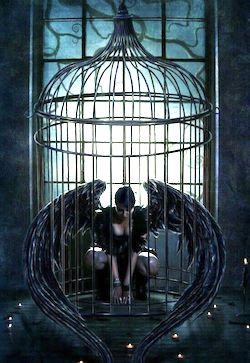 The Inciting Incident. Not long after the village of Lakeside Proper was founded, the fey began to take note of the children in the area. Their love of play and boundless energy were the first human traits that they could grasp and relate to. As those first children became friends with the little and young fey, their parents and elders began to grow concerned. The creatures had powers that were dangerous, many children were injured playing with them, and one child was even turned into an ice statue. After a series of town hall meetings, it was decided that instead of running the fey off or destroying them outright, they would use their children as bait to capture the creatures and imprison them. Creating ice, after all, could prove to be helpful in food storage (as well as profitable). Consultation with witches and wizards confirmed that the villagers could harness the magical traits of the creatures to control the elements and weather, and so their plan was hatched. With the unwitting help of their children, they surprised, captured and imprisoned dozens of the tiny fey creatures that had befriended the children of the Caldera.
The Inciting Incident. Not long after the village of Lakeside Proper was founded, the fey began to take note of the children in the area. Their love of play and boundless energy were the first human traits that they could grasp and relate to. As those first children became friends with the little and young fey, their parents and elders began to grow concerned. The creatures had powers that were dangerous, many children were injured playing with them, and one child was even turned into an ice statue. After a series of town hall meetings, it was decided that instead of running the fey off or destroying them outright, they would use their children as bait to capture the creatures and imprison them. Creating ice, after all, could prove to be helpful in food storage (as well as profitable). Consultation with witches and wizards confirmed that the villagers could harness the magical traits of the creatures to control the elements and weather, and so their plan was hatched. With the unwitting help of their children, they surprised, captured and imprisoned dozens of the tiny fey creatures that had befriended the children of the Caldera.
The Battle. The queen of the fey in their adjacent realm (accessed via ley-line portal) was a quickling by the name of Closaunta the Swift and Vicious. While generally considered a kind and fair ruler, she had earned her name in civil wars in which she showed her enemies no mercy. When her people were taken, she immediately called for her guard and rode to war on her chariot pulled by wolpertingers. While she caught the human villagers off-guard, their witch and wizard allies were able to withstand the initial attack, and soon elemental energies (fueled by the nexus of ley-lines below) were wreaking havoc on both sides as well as the land itself. Within a week patrols of fey and spell-slingers harried each other on the shores and docks of the village, using so much powered magic that it was starting to effect the entire region. With the smaller numbers, the humans were defeated quickly, and the fey continued to patrol lake and its shore, going as far as enchanting denizens of the lake to do their bidding. Tainted water began running down the waterfalls and corrupting plants, trees, and animals across the basin. Heat from various effects began rising in erratic patterns, even further skewing the weather its already abnormal patterns. Legends say it even rained winged frogs for an entire day.
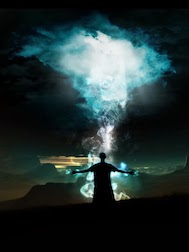 The Conclusion. So caught up in the guerrilla war, nobody noticed that the druids had decided that enough damage had been done. They gathered into four groups, at druid circles in each of the four compass directions, to perform the largest cleansing ritual they had ever devised. Proving that they were true defenders of nature, shepherds of the weather, and not to be trifled with, they spent a week performing the ritual … and every creature in the Marathis’ Cradle took note. The druids in the east collected the dry air of the desert into a dry tornado while the druids in the west pulled every last drop of moisture from the swampy fog to create a wet twister. As these two opposites advanced on the caldera, the druids in the north collected only the coldest air and those in the south the warmest to collide with the wet and dry directly over the lake. To make a show of the spectacle, the druids included colored light and deafening sound in their storms, ensuring that every creature for 100 miles in all directions could see these storms as they slowly advanced over the course of the ritual. The four storms met with an explosion: the warm and dry air was the source of a thunderstorm that forced the cold and wet air to rise quickly, creating a blizzard of epic proportions. The first 8 hours included lightning strikes and hail the size of coconuts as the wind and thunder reached a tumultuous crescendo that was followed by 24 hours of blizzard like conditions within the caldera, causing snow to fall up to 50 miles in all directions as well. When the storm cleared, Closaunta and her troops had all retreated to their realm, conceding the power of weather, nature, and guardianship of the lands to the druids.
The Conclusion. So caught up in the guerrilla war, nobody noticed that the druids had decided that enough damage had been done. They gathered into four groups, at druid circles in each of the four compass directions, to perform the largest cleansing ritual they had ever devised. Proving that they were true defenders of nature, shepherds of the weather, and not to be trifled with, they spent a week performing the ritual … and every creature in the Marathis’ Cradle took note. The druids in the east collected the dry air of the desert into a dry tornado while the druids in the west pulled every last drop of moisture from the swampy fog to create a wet twister. As these two opposites advanced on the caldera, the druids in the north collected only the coldest air and those in the south the warmest to collide with the wet and dry directly over the lake. To make a show of the spectacle, the druids included colored light and deafening sound in their storms, ensuring that every creature for 100 miles in all directions could see these storms as they slowly advanced over the course of the ritual. The four storms met with an explosion: the warm and dry air was the source of a thunderstorm that forced the cold and wet air to rise quickly, creating a blizzard of epic proportions. The first 8 hours included lightning strikes and hail the size of coconuts as the wind and thunder reached a tumultuous crescendo that was followed by 24 hours of blizzard like conditions within the caldera, causing snow to fall up to 50 miles in all directions as well. When the storm cleared, Closaunta and her troops had all retreated to their realm, conceding the power of weather, nature, and guardianship of the lands to the druids.
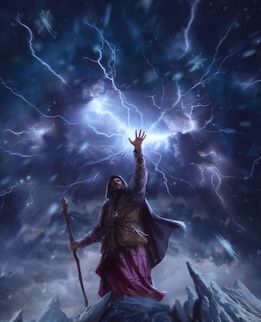 The Festival. To this day, to serve both as a reminder of the past and a promise of the future, the druids gather on the day of the storm to perform a ceremonial version of their ritual. The druids gather upon rim of the caldera in the four compass points, and pass the weather from one group to the other. The druids of the west summon the moisture from the swampy fog, such that it appears in the shape of Closaunta on her war chariot, complete with wolpertingers. As it travels around the region, it gains in size and color and definition until it reaches the lake, where it continues to circle the lake late into the night, snowing until the moisture is gone. This display shows their continued power and control over the weather, as well as serving as a reminder to both human and fey that they were the ones that drove Closaunta back to her realm.
The Festival. To this day, to serve both as a reminder of the past and a promise of the future, the druids gather on the day of the storm to perform a ceremonial version of their ritual. The druids gather upon rim of the caldera in the four compass points, and pass the weather from one group to the other. The druids of the west summon the moisture from the swampy fog, such that it appears in the shape of Closaunta on her war chariot, complete with wolpertingers. As it travels around the region, it gains in size and color and definition until it reaches the lake, where it continues to circle the lake late into the night, snowing until the moisture is gone. This display shows their continued power and control over the weather, as well as serving as a reminder to both human and fey that they were the ones that drove Closaunta back to her realm.
Over time, the fearful memories gave way to respect and honor for the druids and then joy and awe for the beauty of the ritual storm. During this time, the shallows of the lake freeze over, and the villagers take to the ice for fun and games. Fey that are normally only visible to children (see my Imaginary Friend template) tend to allow the adults to see them and join in the fun and games as well. Under the watchful eyes of the druids, upon whom both humans and fey lavish gifts of nature, all creatures enjoy a day of feasting, merriment, and gift giving. Fey will enchant pebbles with magical color trails, and children will compete to skip them the furthest across the water … using the color trails as markers to determine winners. Witches and wizards will travel the streets, performing minor magics for entertainment as well as a larger illusionary recreations of the final battle in which the fey gained the upper hand.
During the original ritual, one of the druids died from the exhaustion of performing the ritual for days without rest. As thanks for what they had done, many villagers gathered to offer what they felt the eldest druid would consider the greatest gift. To their surprise, the druids selected the only villager to arrive without any herb or seed, having only their life and service to offer. Ever since, after the passing of a druid, the circle will await the next festival and choose the replacement from those the villagers gathering to make an offering. During these years, at the final feast, those that wish to join line up and offer a gift to the eldest druid, who then accepts the gift from the most promising applicant.


